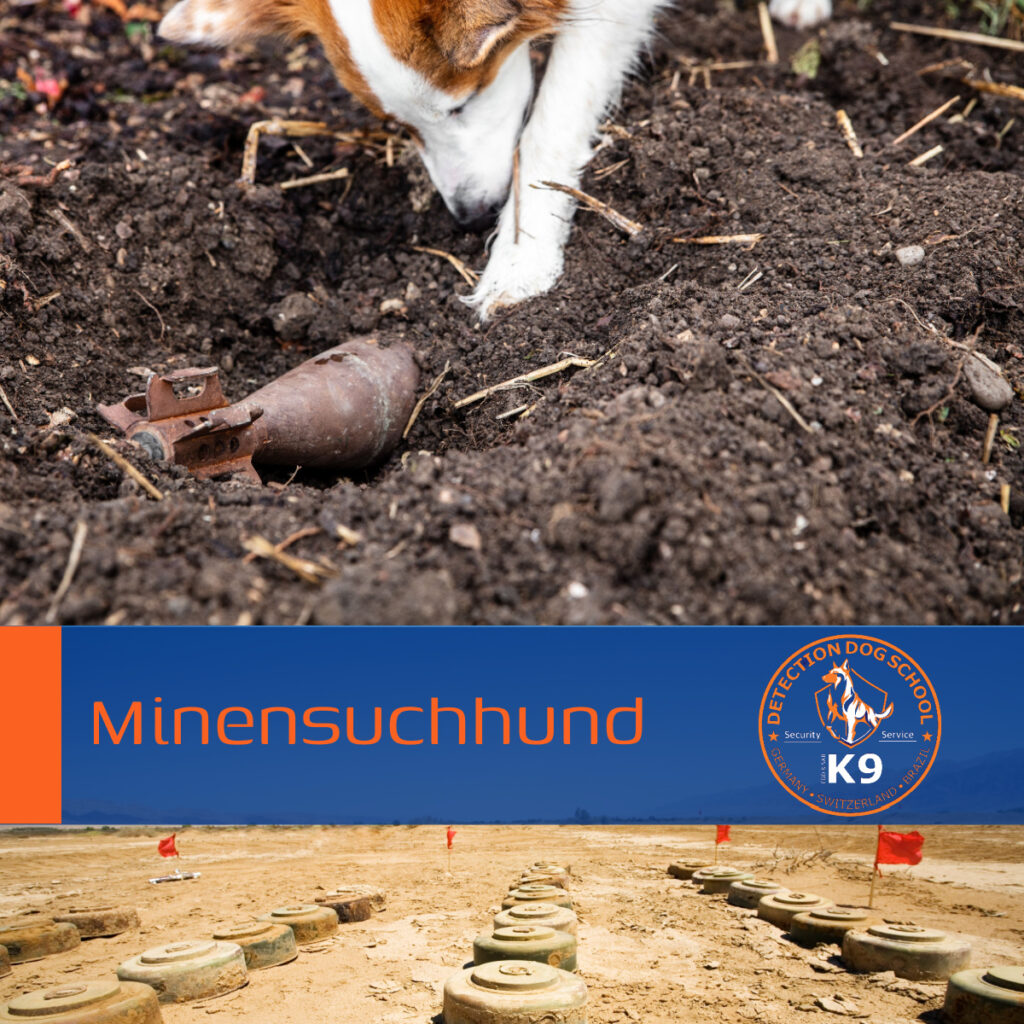What is the difference between a mine detection dog and an explosive detection dog?
A mine detection dog and an explosive detection dog are specially trained canines, each trained to detect specific hazardous materials. Although the terms can sometimes be used interchangeably, there are several differences between the two:
Mine Detection Dog: A mine detection dog is trained to recognize landmines and other explosive remnants of war. These dogs are often deployed to search contaminated areas for landmines left behind after conflicts or wars. Their training involves recognizing odors and chemical compounds associated with landmines. Mine detection dogs can identify the scents emitted by landmines and indicate to their handlers where potentially dangerous areas are located. (mine detection dog, MDD)
Explosive Detection Dog: An explosive detection dog is trained to detect various types of explosives and explosive-like substances. These dogs are often employed in security and law enforcement measures, such as detecting explosives at airports, train stations, public events, or other potentially vulnerable locations. They can identify a wide range of explosives based on their distinctive scents and signal to their handlers when they detect such odors.
Overall, both mine detection dogs and explosive detection dogs can have similar capabilities since both are trained to detect hazardous substances. However, the exact terminology may vary depending on the focus of training and the application area. Both types of dogs are invaluable to security and humanitarian efforts, aiming to protect lives and secure dangerous areas.
What is a mine dog?
A mine dog, also known as a mine detection dog, is a specially trained dog that has been trained to sniff out and indicate the presence of landmines and other explosive remnants of war. These dogs are capable of recognizing and locating the characteristic scent of chemicals and materials found in landmines.
Mines and explosive remnants of war pose significant threats to human safety, especially in areas affected by conflicts or wars. Mine detection dogs are deployed to search such hazardous areas and locate landmines for safe removal or neutralization. In doing so, these dogs contribute significantly to mine clearance and the safety of civilians.
The work of mine detection dogs requires intensive training and a high level of trust and cooperation between the dog and its handler. These dogs must learn to operate in various environments and conditions, paying attention to their handler’s commands to mark potentially dangerous spots.
Overall, mine detection dogs play a crucial role in humanitarian efforts to clear areas of landmines and protect lives. They are an impressive example of dogs’ remarkable abilities and their capacity to assist humans in diverse situations.
Distinguishing from Tank Detection Dogs
A tank detection dog, also referred to as a tank dog or tank detection canine, was a tactical measure employed during some wars and conflicts of the 20th century. These were dogs trained to place explosives or charges, such as magnetic mines, beneath enemy tanks or vehicles.
Tank detection dogs were also known as mine dogs or dog mines!
During World War II, various countries, including the Soviet Union, used tank detection dogs. The idea was to release the dogs near enemy tanks to place explosives underneath them. Once triggered by pressure fuses, the explosives were meant to damage or destroy the tanks.
However, this tactic proved to be ineffective and raised ethical concerns. The dogs often couldn’t differentiate between enemy and friendly troops, leading to tragic situations. Additionally, the dogs didn’t always reliably distinguish between enemy and friendly tanks, resulting in unpredictable outcomes.
Overall, the use of tank detection dogs was found to be unreliable and cruel, leading to its decline in popularity after World War II. Nowadays, dogs are mainly employed for other tasks, such as detecting explosives or drugs. The use of animals in warfare has evolved and diminished significantly.
Of course, we do not train any dogs or any animals to harm or damage humans, animals, or objects! Animal welfare is our top priority. We also do not train dogs to harm themselves.
